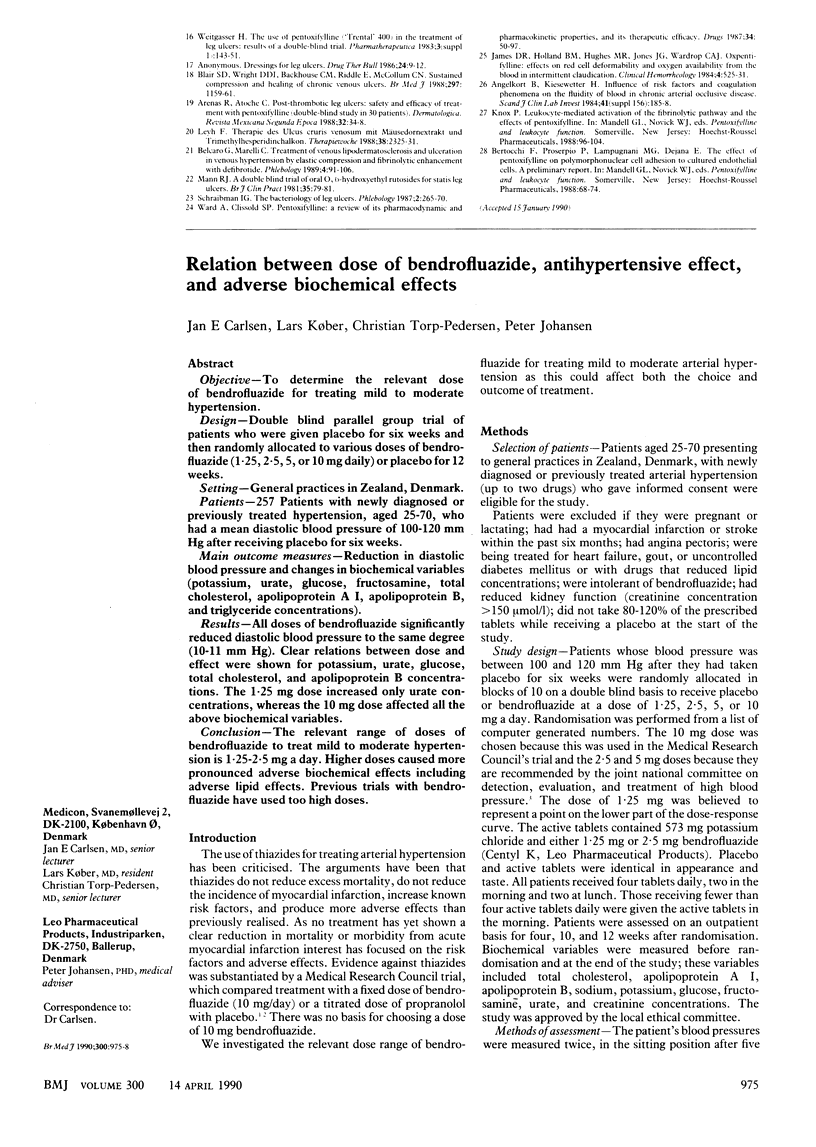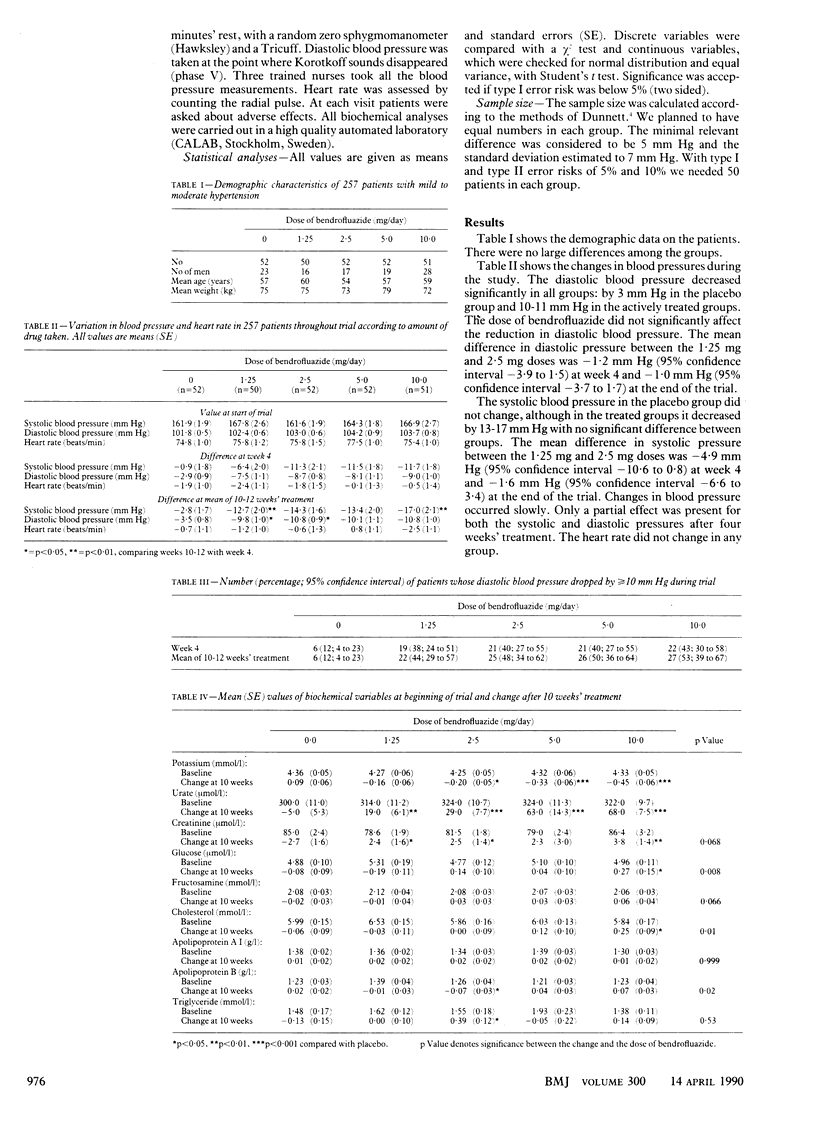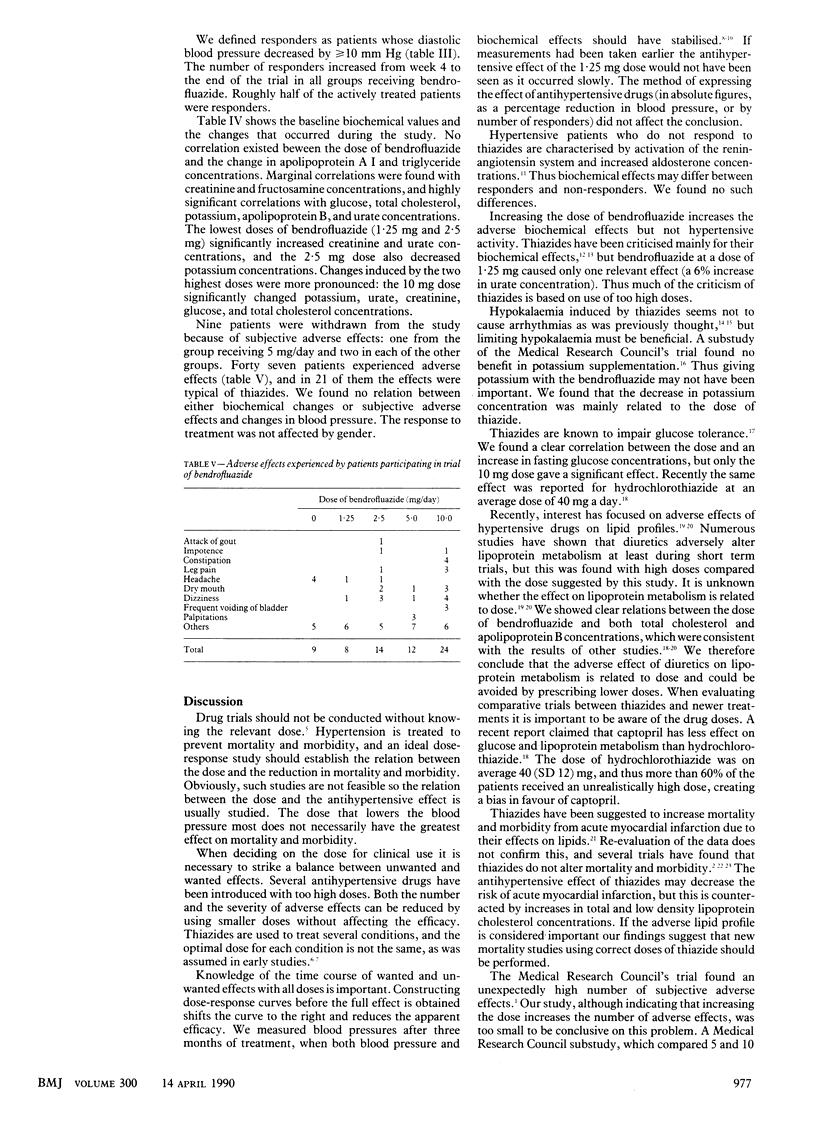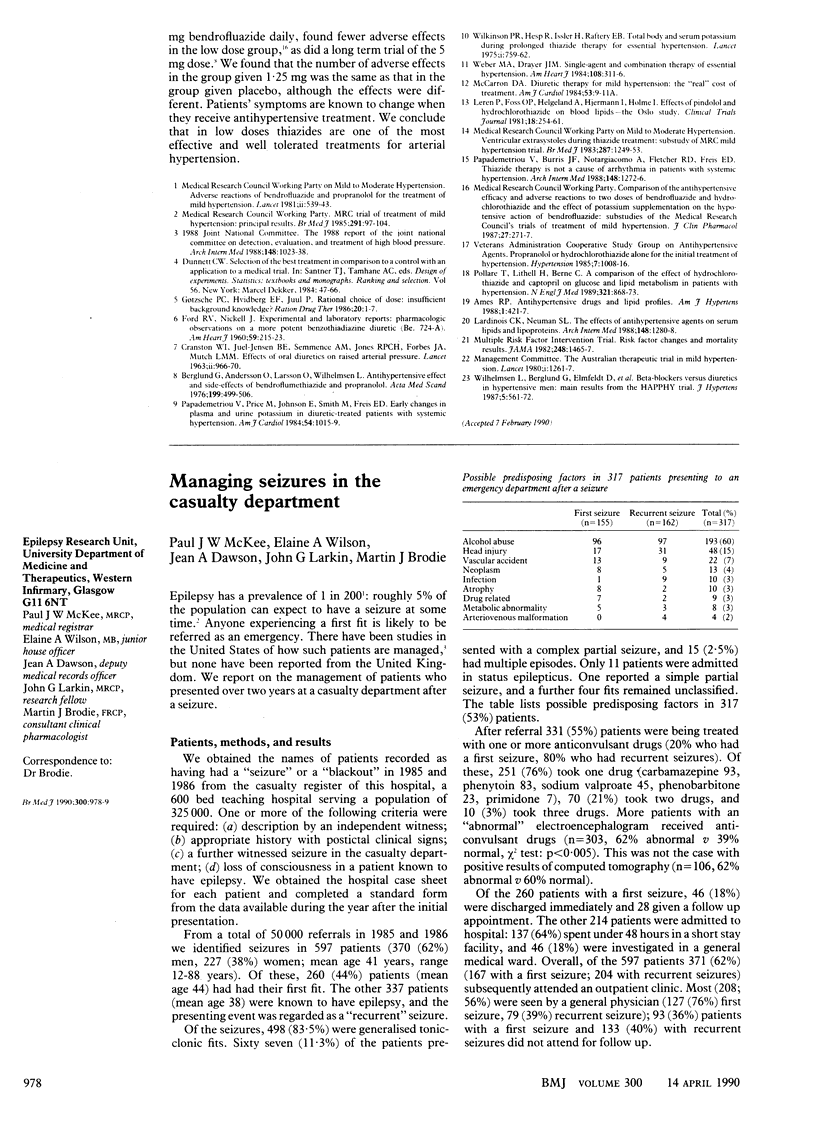Abstract
OBJECTIVE--To determine the relevant dose of bendrofluazide for treating mild to moderate hypertension. DESIGN--Double blind parallel group trial of patients who were given placebo for six weeks and then randomly allocated to various doses of bendrofluazide (1.25, 2.5, 5, or 10 mg daily) or placebo for 12 weeks. SETTING--General practices in Zealand, Denmark. PATIENTS--257 Patients with newly diagnosed or previously treated hypertension, aged 25-70, who had a mean diastolic blood pressure of 100-120 mm Hg after receiving placebo for six weeks. MAIN OUTCOME MEASURES--Reduction in diastolic blood pressure and changes in biochemical variables (potassium, urate, glucose, fructosamine, total cholesterol, apolipoprotein A I, apolipoprotein B, and triglyceride concentrations). RESULTS--All doses of bendrofluazide significantly reduced diastolic blood pressure to the same degree (10-11 mm Hg). Clear relations between dose and effect were shown for potassium, urate, glucose, total cholesterol, and apolipoprotein B concentrations. The 1.25 mg dose increased only urate concentrations, whereas the 10 mg dose affected all the above biochemical variables. CONCLUSION--The relevant range of doses of bendrofluazide to treat mild to moderate hypertension is 1.25-2.5 mg a day. Higher doses caused more pronounced adverse biochemical effects including adverse lipid effects. Previous trials with bendrofluazide have used too high doses.
Full text
PDF



Selected References
These references are in PubMed. This may not be the complete list of references from this article.
- Berglund G., Andersson O., Larsson O., Wilhelmsen L. Antihypertensive effect and side-effects of bendroflumethiazide and propranolol. Acta Med Scand. 1976;199(6):499–506. doi: 10.1111/j.0954-6820.1976.tb06770.x. [DOI] [PubMed] [Google Scholar]
- CRANSTON W. I., JUEL-JENSEN B. E., SEMMENCE A. M., JONES R. P., FORBES J. A., MUTCH L. M. EFFECTS OF ORAL DIURETICS ON RAISED ARTERIAL PRESSURE. Lancet. 1963 Nov 9;2(7315):966–970. doi: 10.1016/s0140-6736(63)90671-8. [DOI] [PubMed] [Google Scholar]
- FORD R. V., NICKELL J. Pharmacologic observations on a more potent benzothiadiazine diuretic (Be. 724-A). Am Heart J. 1960 Feb;59:215–223. doi: 10.1016/0002-8703(60)90280-5. [DOI] [PubMed] [Google Scholar]
- Lardinois C. K., Neuman S. L. The effects of antihypertensive agents on serum lipids and lipoproteins. Arch Intern Med. 1988 Jun;148(6):1280–1288. [PubMed] [Google Scholar]
- Papademetriou V., Burris J. F., Notargiacomo A., Fletcher R. D., Freis E. D. Thiazide therapy is not a cause of arrhythmia in patients with systemic hypertension. Arch Intern Med. 1988 Jun;148(6):1272–1276. [PubMed] [Google Scholar]
- Papademetriou V., Price M., Johnson E., Smith M., Freis E. D. Early changes in plasma and urinary potassium in diuretic-treated patients with systemic hypertension. Am J Cardiol. 1984 Nov 1;54(8):1015–1019. doi: 10.1016/s0002-9149(84)80136-8. [DOI] [PubMed] [Google Scholar]
- Pollare T., Lithell H., Berne C. A comparison of the effects of hydrochlorothiazide and captopril on glucose and lipid metabolism in patients with hypertension. N Engl J Med. 1989 Sep 28;321(13):868–873. doi: 10.1056/NEJM198909283211305. [DOI] [PubMed] [Google Scholar]
- Weber M. A., Drayer J. I. Single-agent and combination therapy of essential hypertension. Am Heart J. 1984 Aug;108(2):311–316. doi: 10.1016/0002-8703(84)90617-3. [DOI] [PubMed] [Google Scholar]
- Wilkinson P. R., Issler H., Hesp R., Raftery E. B. Total body and serum potassium during prolonged thiazide therapy for essential hypertension. Lancet. 1975 Apr 5;1(7910):759–762. doi: 10.1016/s0140-6736(75)92432-0. [DOI] [PubMed] [Google Scholar]


